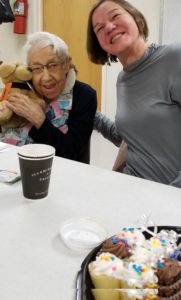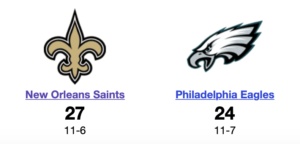Saturdays with Seniors: Wanda’s Scrap Soup
January 23, 2021 • 14 Comments • Posted in guest blog, memoir writingI am pleased to feature 99-year-old Wanda Bridgeforth as our Saturdays with Seniors guest blogger today. If you’ve followed our blog for a while, you know Wanda – she’d been attending the memoir writing class I led in downtown Chicago for nearly two decades before coronavirus hit last year.
What you might not know about Wanda is that she is an immigrant: she was born in Canada. Hamilton, Ontario to be exact. The woman Wanda has always affectionately called Mama is the woman who adopted Wanda as an infant and loved and raised her. Mama had to work “in family” during the Great Depression, and the “Ma Hale” mentioned in this essay was one of many helpful women in Chicago’s Black Metropolis who pitched in to take care of young Wanda while Mama lived with the families she cooked and cleaned for.
Mama’s resilience and determination has influenced Wanda’s own life ever since. Sheltering-in-place in her apartment now, Wanda fills her days with episodes of Jeopardy!, naps, meals, and visits from Wanda Jr. The rest of the time you’ll find her looking out the window, amazed at the beauty of Lake Michigan and the sky above. “And sometimes I just close my eyes and reminisce,” she says. “It makes me happy.”
By Wanda Bridgeforth
A young friend asked me how I was surviving the quarantine. “Just like I lived through other crises,” I told her.
It is hard to believe that the first house we lived in when we came to Chicago was still lit by gas lamps on the walls, fireplaces in every room and a wood-burning stove in the kitchen. The kitchen was so large -Ma Hale’s work space was an old dining table set in the center of the room. Chairs lined two walls, and we children had our snacks, played games, and did our homework on one side and the end of it. On Friday and Saturday evenings the family gathered around the table for games and chit-chat.
This past year I received a container of herbal vegetable soup in the mail for my birthday. The first spoonful took me back to pre-depression days when a pot of soup and a pot of coffee were on the back burners every day. Mama and Ma Hale called it “Scrap Soup.” How comforting and cozy to sit at the table with hands wrapped around a mug, sipping soup that warmed body and soul.
When I moved to Jefferey Avenue, I introduced my nephews and niece there to this delicious dish, but there was a bit of difference in the flavor (the early soup was made with vegetables fresh from Ma Hale’s backyard garden). Ma Hale would put a soup bone into a big stew pot, add water, the saved tips, ends from beets, carrots, skin from onions and potatoes, stems from greens, hulls from green peas, cores from cabbage and cauliflower. She’d add a bit of salt pork or bacon rind, and, lastly, seasoning to taste. The aroma filled the house as it steeped slowly on the back burner of the wood-fired stove, and the soup I received for my birthday reminded me so much of the scrap soup of yesteryears that I keep ordering more!



